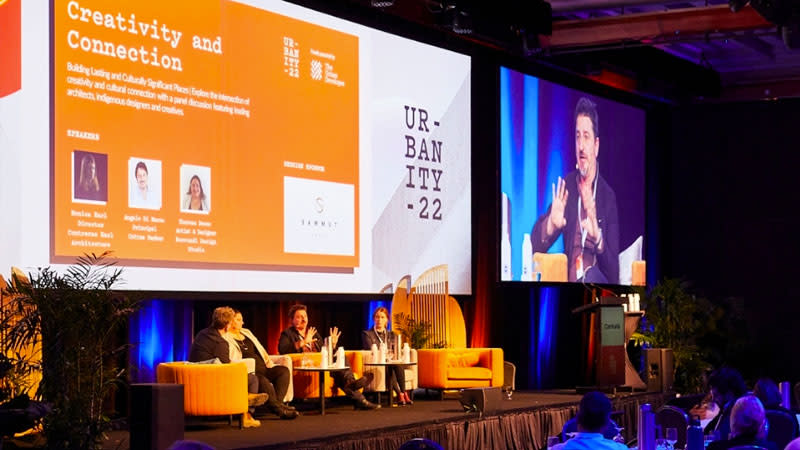
First Nations' Country-centred design is finally being embraced by the development sector with a view to peeling back the layers of “colonial veneer” in Australia’s urban landscapes.
But the process of embedding and weaving indigenous design principles through our cities will be challenging, leading architects, indigenous designers and creatives have told attendees at The Urban Developer’s Urbanity 2022 conference.
“There is an emergence of indigenous design principles … [but] designing with Country is a different process,” Burundi Design Studio’s Theresa Bower said.
“It’s not about a product at the end. It’s about the process you go through to engage with First Nations people and traditional owners of Country … to make sure that those voices are coming through in the design.
“We’re on Aboriginal and Torres Strait islander lands wherever we are.
“But if you walk into our cities you are almost bombarded by conquerest architecture.
“The story of Country needs to be brought more into the cities … by taking a step back from impermeable surfaces to something that is not so removed from its natural form.

“The whole culture actually revolves around our physical relationship with Country.
“Which means that everything we do is about the care and health of Country … designing with Country has sustainable aspects, it has climate resilience ramifications and as a designer it’s also an opportunity to design in a different way.”
Contreras Earl Architecture director Monica Earl said for a long time Australia had “looked abroad for inspiration, thinking that overseas has the better architecture”.
“But there’s a new feeling here now and we are looking to our own country in many ways and that’s also providing an amazing opportunity for us to learn about the indigenous culture of any landscape we are designing on.”
Cottee Parker Architects principal Angelo Di Marco said the embedding of indigenous design principles into the development sector was going to take a “big shift”.
“Country-centred design is a huge shift,” he said. “And it’s going to be challenging to take the blinkers off, ask ourselves, ‘Is what we’ve been designing for so long wrong?’ and then learn something new … but we shouldn’t be afraid of that.”
According to Bower, however, embedding indigenous culture and knowledge into a building “doesnt actually mean it has to look any different than what it really looks like now”.
“It just has to take different aspects and different elements and think about them differently,” she said. “Instead of using western architecture styles, use more natural materials that actually take the site into context and use that to develop designs to give it an extra layer of place.”